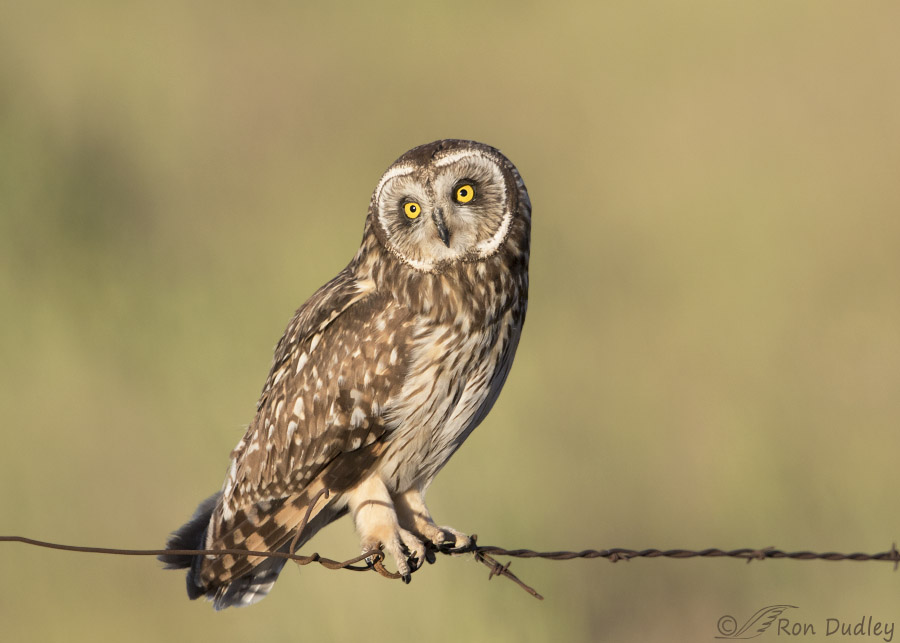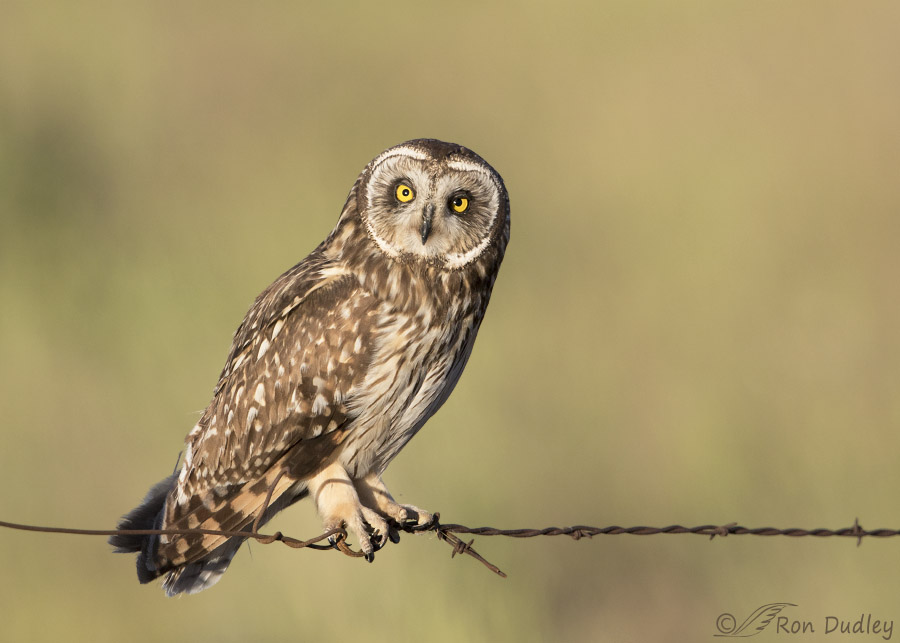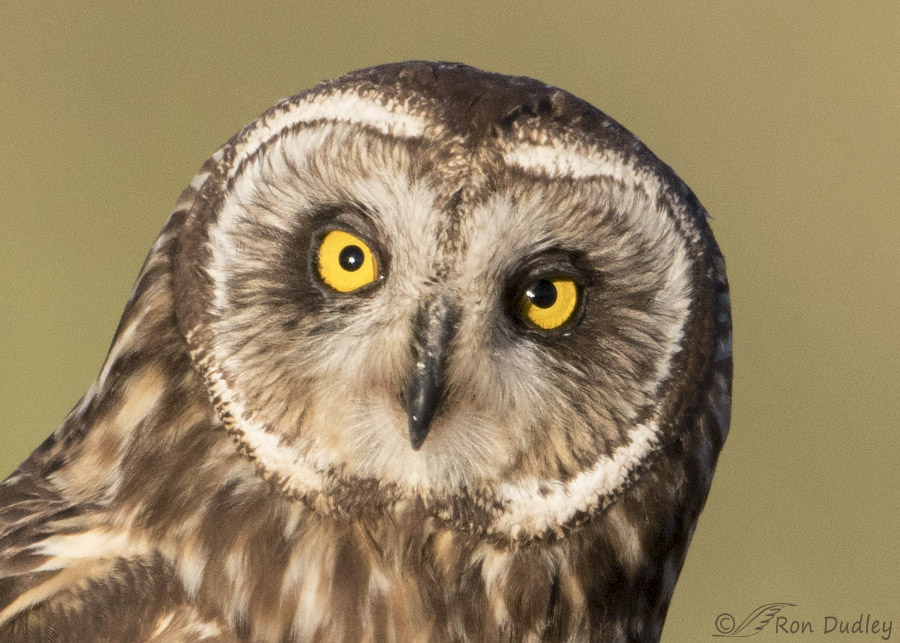Ok folks, I need some help with this one.

1/1600, f/6.3, ISO 500, Canon 7D Mark II, Canon EF 500mm f/4L IS II USM + EF 1.4 III Extender, not baited, set up or called in
I photographed this very young juvenile Short-eared Owl three months ago in Box Elder County, Utah. I have quite a few nice photos of it and I posted a couple of them here several months ago. Last night I stumbled across those images again and as I was reviewing them I noticed something that I’d missed earlier.
Take a close look at the eyes of this bird. In this image they appear normal to me except that the left pupil might be ever so slightly larger and in my experience there’s absolutely nothing unusual about that.

1/2000, f/6.3, ISO 500, Canon 7D Mark II, Canon EF 500mm f/4L IS II USM + EF 1.4 III Extender, not baited, set up or called in
But just seconds later the left eye had apparently moved within the skull while the right eye had not so the eyes appear to be looking in different directions. It almost looks like strabismus (crossed eyes) in humans but that should be impossible in owls for the following reasons:
- owls don’t have eyeballs as such, instead their eyes are elongated tubes
- those tube-shaped eyes are held rigidly in place by bony structures in the skull called sclerotic rings
- they compensate for this restriction by their ability to turn their heads 270° right or left and almost upside down
But they cannot move their eyes within their skulls – they can only look straight ahead.
So what accounts for what I captured here? Am I misinterpreting what I think I’m seeing? Is my understanding about the functioning of owl eyes incorrect? Is there possibly some physical anomaly in this bird that would allow it to move that eye within its skull? I don’t know so I’m stumped and curious as hell.
This isn’t a phenomenon captured in just one photo. I have several images that show the left eye in each position.
So if anyone out there can scratch my curiosity itch it would be appreciated. Thanks in advance for any thoughts on the subject.
Ron
PS – For those who might like to see a diagrammatic representation of the anatomy of an owl’s eye and a detailed explanation of how their eyes work you can visit this link to The Owl Pages.
Late Addendum: With major help from my readers in the comments below I believe we may have solved the mystery – the nictitating membrane is likely the major cause of what I was seeing. When I originally read those comments on my phone while I was out shooting this morning I was skeptical that it was caused by the membrane but after I arrived home I did a tight crop on the owl’s head of the high res file (image below) and in that version the membrane is clearly visible over the inside corner of the eye. I believe that when combined with the left pupil being dilated more than the other one it gave the illusion that the eyes were looking in slightly different directions. Now I don’t believe they were.
However, there’s apparently still something going on with that left eye. I have other images that show the membrane in the same position (partially closed). Since the membrane normally closes and opens very fast I shouldn’t have multiple back to back images that show the same thing. To complicate things further, in some of my photos I can’t see the membrane at all which suggests to me that the bird kept it partially closed much of the time (unusual) but was capable of completely opening it at other times.
So perhaps there is a slight injury to the eye.



Thank you and your knowledgeable commentators for continuing my education.
If as has been suggested the owl does have an eye injury I hope it is minor and self-repairing.
Yes, my readers are great, EC. I have the same wish for the owl if there’s an injury.
I have no guesses, educated or otherwise.
Still trying to get over being jealous of your superb photograph of an owl! (A permanent condition of mine which I continually and voluntarily exacerbate by visiting here to view more wonderful images which triggers more jealousy in a vicious cycle which I have no intention of interrupting.)
Thanks very much, Wally. I hope you get some “owl luck” very soon!
If the eye is moving it likely has an eye injury. As you posted the eyes in owls do not move. Owls eyes can dilate independently of each other, so unless an eyes does not dilate appropriately to light intensity it can be difficult to tell if an eye is damaged by dilation. Eye injuries are common in owls. I have often seen owls with”blown out eyes”. Head trama or eye trama can cause an eye to detach, it makes survival harder but many manage. Generally there is not much that can be done to repair the eye if they make it to a rehab.
April, please read my addendum above and see if it seems logical to you.
Eye have no clue what that bird’s optical problems are, but am very glad to see one as usual…looks heslthy enough do hunting, I hope is not a problem…I love these owls!
Patty, if there is an injury to that eye it didn’t seem to be causing significant problems for the bird.
I don’t really know about the eyes, but when you mentioned it, makes me think about my problems. Developed 3rd Optic eye nerve problems and my eye shifted to the side and the pupil dilated. Causing double vision, droopy eyelid. Eye has gone back to normal after 6 months, but still dilated causing me to have double vision. My muscles in the eye are some what slow. Back to the Owl, maybe a defect or damage or blow to the head could cause the problem. Hope he has luck searching for food, and being out during the day. Yes the picture is beautiful.
Trudy, it sounds like you’ve been through hell with that eye. I hope the rest of your symptoms clear up very soon!
Interesting conundrum. After reading the link article, the one possibility that occurs to me is that it could have a birth defect where it was missing the sclerotic rings? Just a guess. Apart from all that, it’s a beautiful bird.
Thank you, Susan.
I’m definitely not an “owlithologist”, nor do I play one on TV, but I’ll throw in my hypothesis. I think that you may have an example of a photographic trompe l’oeil. There does seem to be a bit of membrane covering the medial aspect of the left eye. That membrane, combined with a bit of shading from the eyelid, may be leading to a slight pupillary response (dilation). Because of the angle of the owl’s head, the change in pupil size gives the illusion that the eye has moved. However, when I tilt the shot so that a line through the centers of the pupils (as approximated from the lateral edges of the eyes) becomes parallel to the floor, the illusion of movement disappears. Dem’s my two cents, for whatever they’re worth. 🙂
TL;DR: the shot faked us out — he’s fine 😉
” trompe l’oeil” – I had to look that one up, Marty!
I believe you’re right. See my addendum above.
I have a photo of this owl and noticed the same thing. Sorry, but no explanation.
Very interesting that you photographed the same thing in the same bird, Suzanne.
I don’t have a professional opinion, but a question. Is it physically possible for Owls to have a lazy eye?
There doesn’t appear to be a noticeable injury, so I’m as curious as you for the reason for the difference.
Thanks for the post, great images!
“Is it physically possible for Owls to have a lazy eye?”
Dick, if you’re referring to the amblyopia version of lazy eye (there are two other versions of it) I don’t believe so – because normally their eyes can’t move in their skulls.
Ron, I’m definitely not up to date on the current literature and my memory may not be accurate. But, as I recall, in the Barn Owl accommodation is linked in the two eyes but, as you have observed, pupil size is not. Also, my recollection is that in the Barn Owl, the eyes were not totally immobile, but extremely restricted. I seem to remember something like two degrees being the maximal excursion. I don’t know how these findings translate to the Short-eared Owl. I don’t know if what you are observing falls outside what would be observed if you allowed the eye to move two degrees and then take into account the different diameters of the pupils. It is difficult to know absolutely the relative orbital positions of the eyes by looking at the pupils alone. The external tissue surrounding the two eyes affects our judgment of position. I can imagine a “droopy” eyelid in the left eye in the second photo, but it may just be the shadow. But you could rule this out by looking at all your other shots. The barn owl does have six extraocular muscles, but they are small and given the layout of the tubular eye and the location of the muscles, external damage of one of the muscles seems unlikely, but there could be some congenital damage. None of this answers your question, but it is all I could dredge up from my elderly memory banks.
Thanks very much for the detailed response, David. Given your expertise on vision I was hoping you’d weigh in on this. Please see my addendum above.
Your comment brought up another question in my mind. If SEO’s are capable of moving their eyes 2° would that movement be bilateral (both eyes at the same time like ours do?).
Lovely bird! When I expand the picture as much as I can on my phone, what I think I see is possibly the edge of the nictitating membrane, which, through a trick of angle and/or light, gives the impression of the left eye having moved in the socket. My guess, anyway, for what it’s worth. As always, thanks for your beautiful and thought-provoking images!
Trudy, See my addendum above.
The left eye does appear to have motion and a larger pupil than the right. Is darker coloring/little puffier eyelid/ around the eye unusual/just the lighting? Doesn’t appear that it doesn’t really have control over the position of the eye between the pictures. An injury of some sorts perhaps? Truly a puzzle! Beautiful photo’s at any rate?
Thank you, Judy.